Arrhythmias

Raja Selvaraj. Professor of Cardiology, JIPMER
https://rajaselvaraj.in/talks/arrhythmias_mbbs_2020_with_notes.html raja@rajaselvaraj.in
17-06-2020
Organization of this talk
- Normal rhythm
- Arrhythmias - Introduction
- Case illustrations
- Management - interspersed
What do you know?

- Bradycardia 2. Tachycardia
- Normal rate 4. I don't know
What do you know - What is the abnormality?

- First degree heart block
- Second degree heart block
- Third degree heart block
- I don't know
What do you know - Which is present in this ECG?
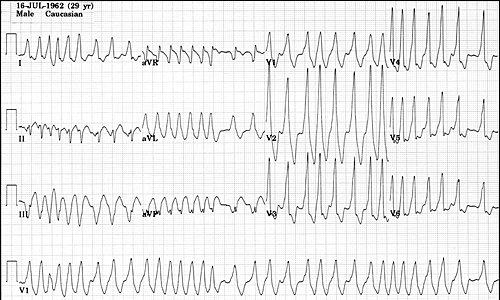
- Preexcitation 2. Atrial fibrillation
- Both 4. None
Arrhythmias
- Lack of rhythm
- Not normal rhythm
Normal rhythm
- Origin
- Rate
- AV conduction
Normal rhythm
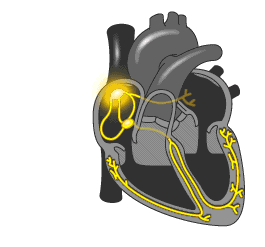
Arrhythmias - Classification
- Bradyarrhythmia
- Tachyarrhythmia
Bradyarrhythmias - Causes
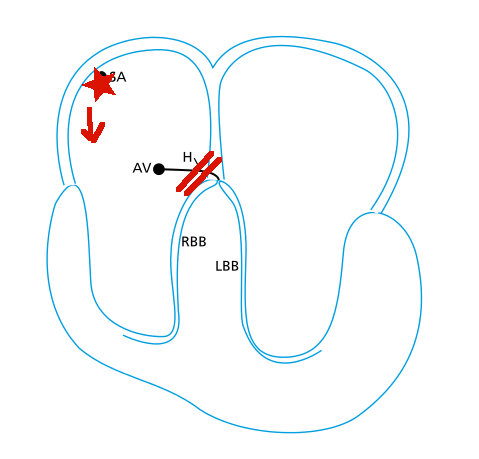
Bradyarrhythmias
- Sinus node disease (too few P waves)
- Atrioventricular block (too few QRS, P > QRS)
Sinus node disease
- Sinus arrest
- Sinus bradycardia
- Sino-atrial block
- Second degree type I
- Second degree type II
Atrioventricular block
First degree
Second degree type I
Second degree type II
Third degree
Tachyarrhythmias - Causes
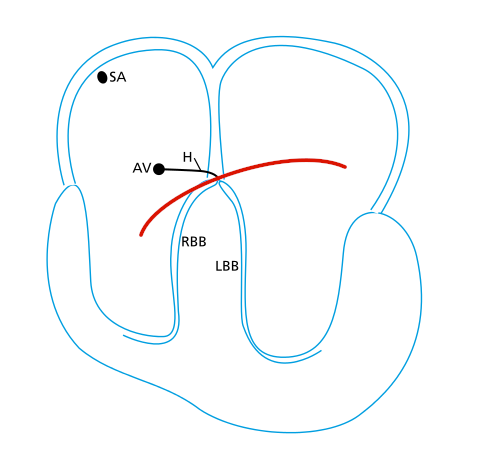
Tachyarrhythmias
- Supraventricular tachycardia
- Ventricular tachycardia
Supraventricular tachycardia
Sinus tachycardia
Atrial tachycardia
Atrial flutter
Atrioventricular nodal reentrant tachycardia
Atrioventricular reentrant tachycardia
Atrial fibrillation
Ventricular tachycardia
Premature ventricular complexes
Ventricular tachycardia
Ventricular fibrillation
ECG display

Rate
- 300 / large squares
- 1500 / small squares
Axis
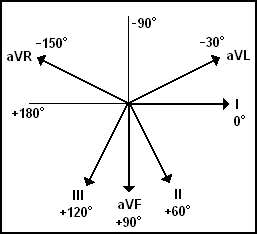
Axis
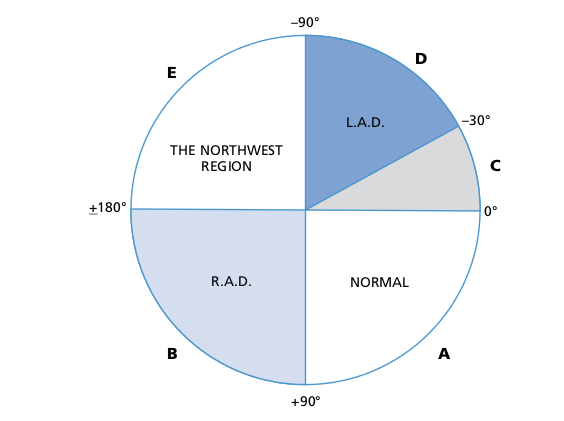
30 year old male - ECG done for pre-employment check up
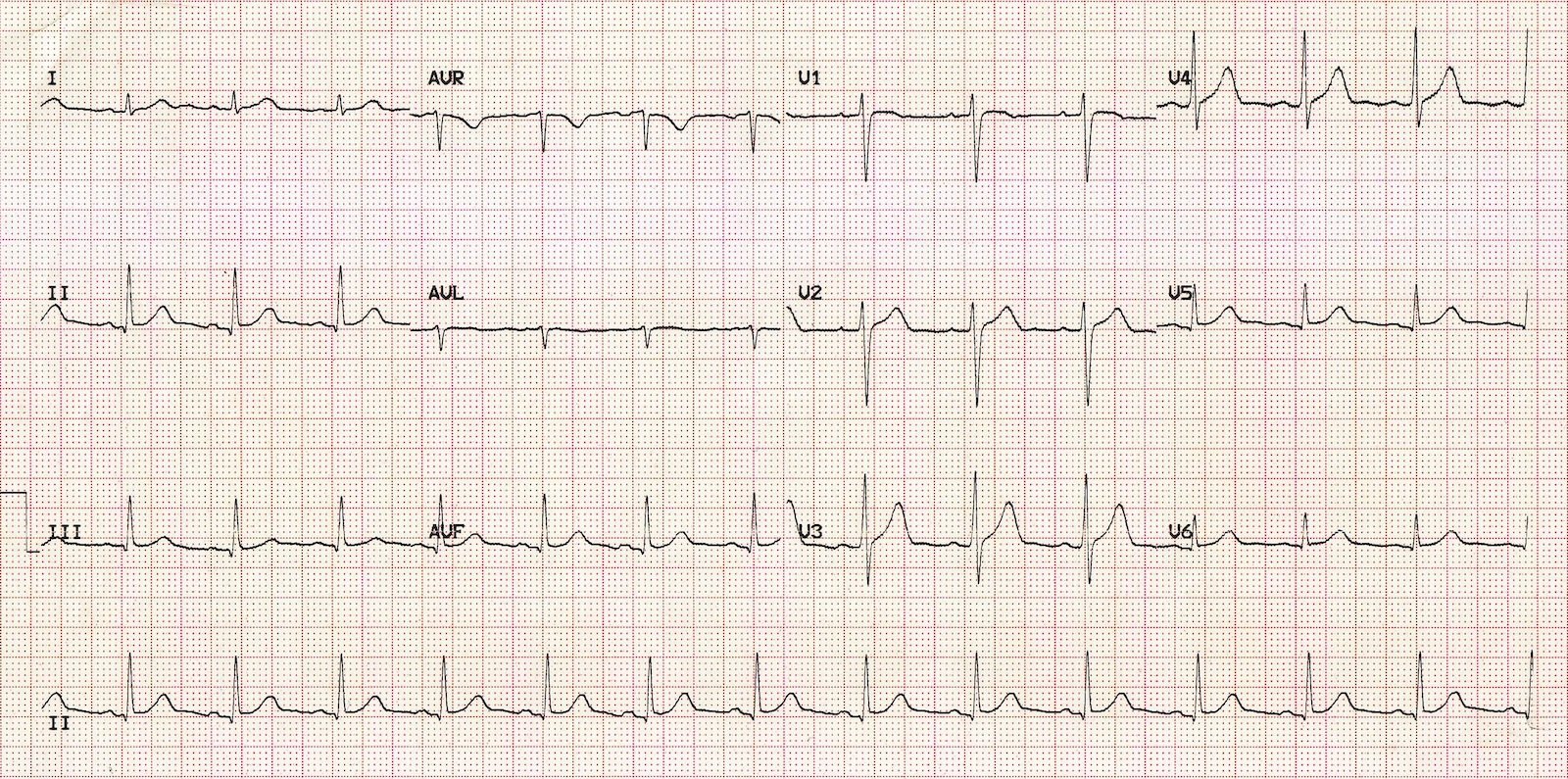
P wave axis
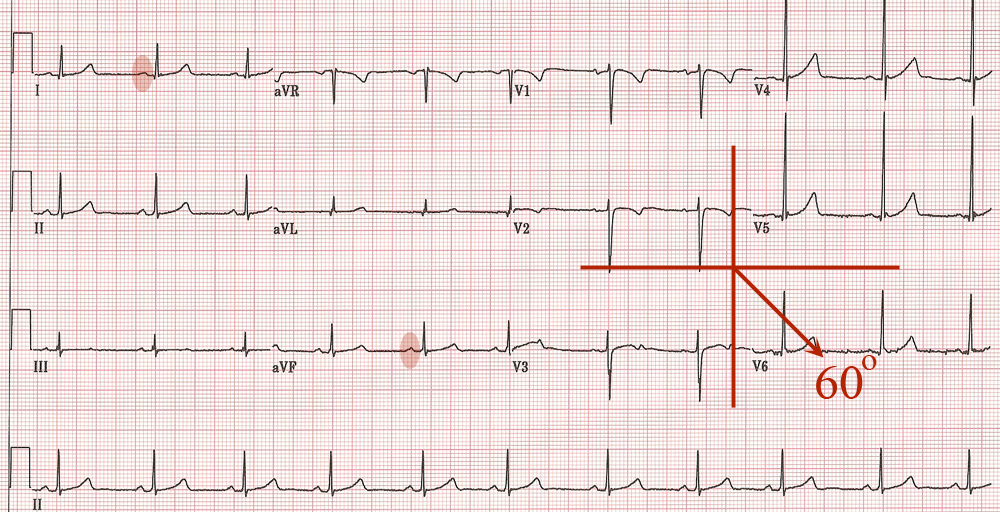
60 year old female, complains of presyncopal episodes

Bradycardia - symptoms
- Giddiness
- Syncope
- Fatigue
- Breathlessness
- Death
Young male, asymptomatic

Management of sinus bradycardia
- Rule out underlying cause
- Drugs ?
- Physiological ?
- Pacemaker implantation
Drugs
- Atropine
- Isoprenaline
- Orciprenaline
- Long acting theophylline
55 year old male, asymptomatic, referred for abnormal ECG

AV Conduction block - degrees
- First: All P waves conducted
- Second: Some P waves conducted
- Third: No P waves conducted
Young male, found to have irregular pulse

Second degree AV block - Mobitz types
- Type 1 - Progressive PR prolongation before block
- Type 2 - Fixed PR interval of conducted beats
RR interval in Wenckebach block

Middle aged female with syncope
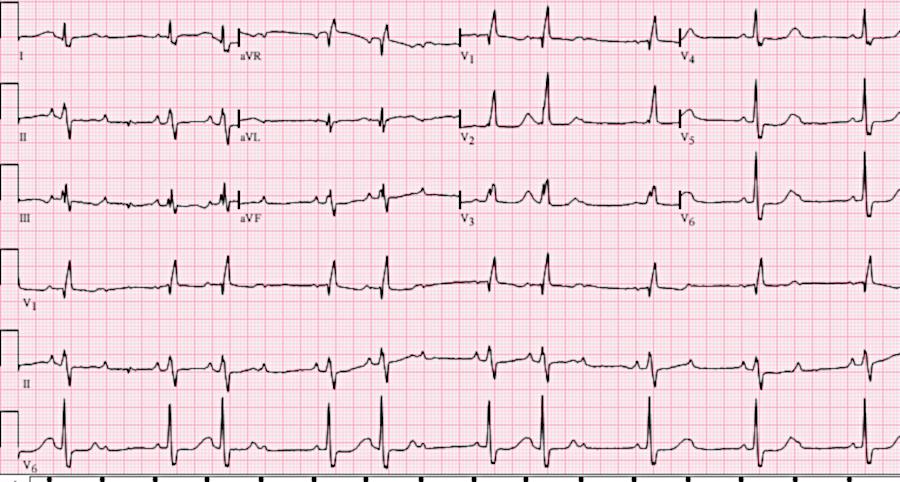
Middle aged female with syncope
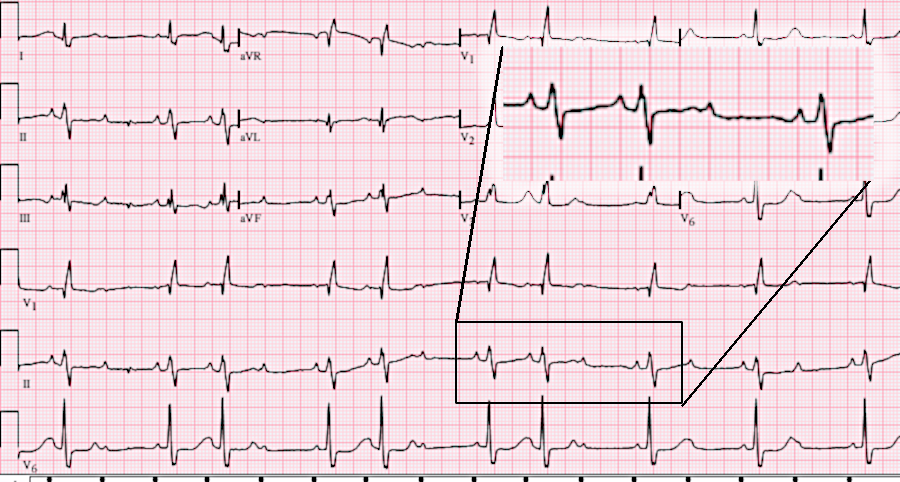
Mobitz types - implications
- Type 1
- Block above His
- Usually benign
- Type 2
- Block at or below His
- Usually needs treatment
Atrioventricular conduction system
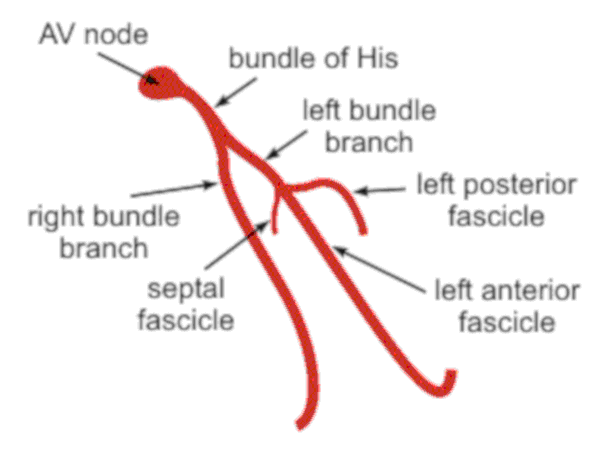
70 year old male, fainted at home

Pacing - temporary
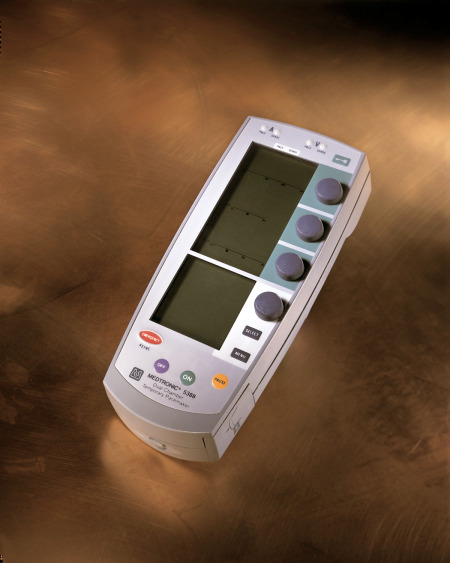
Pacing - permanent
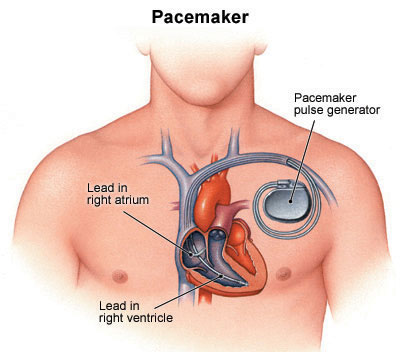
Pacing for CHB
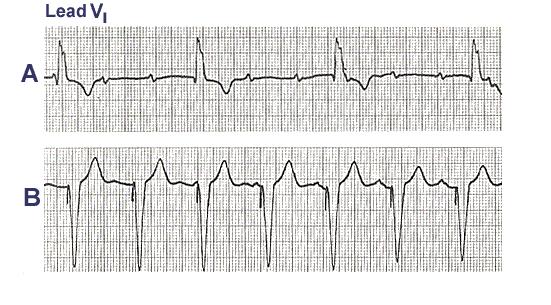
Clinical examination in bradycardia
How can you differentiate sinus dysfunction from atrioventricular block?
- Pulse rate
- Second heart sound
- JVP
Rapid pulse in pre-operative patient
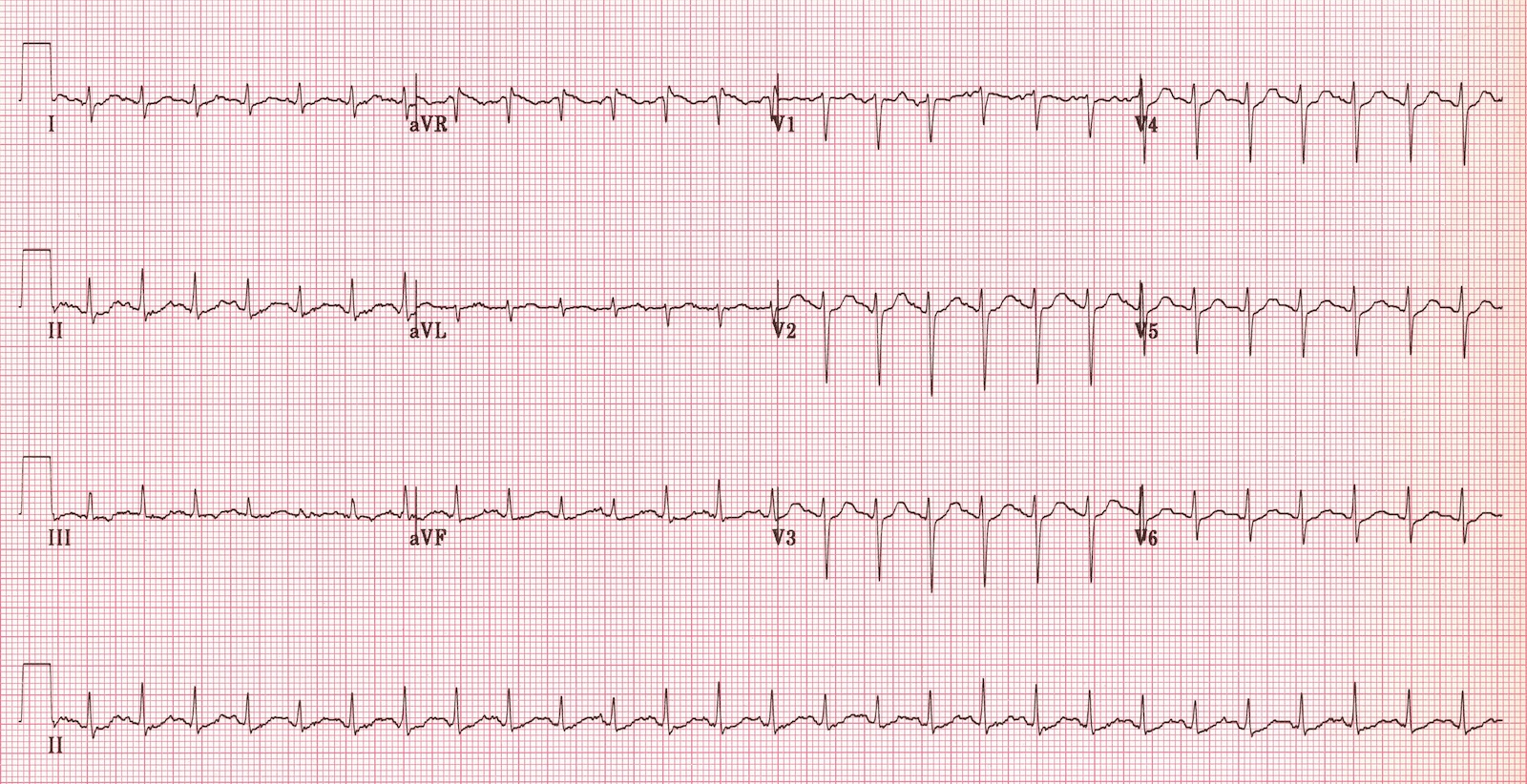
Sinus tachycardia
- Fever
- Stress
- Hypovolemia
- Hyperthyroidism
- Inappropriate sinus tachycardia
10 year old boy referred from pediatric OPD for irregular pulse
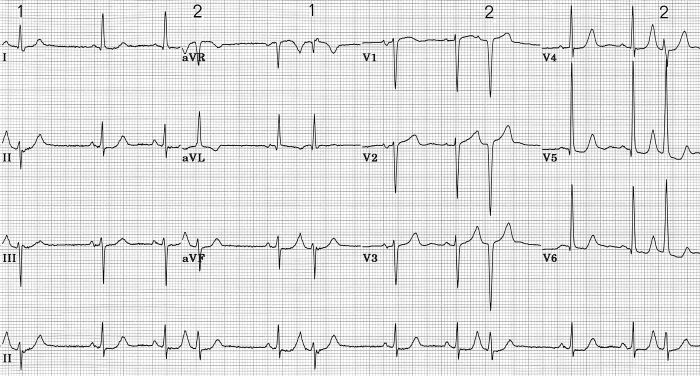
Premature atrial beats
- Benign in absence of structural heart disease
- "Missed beats"
- Rarely need treatment
Supraventricular tachycardia and AV junction
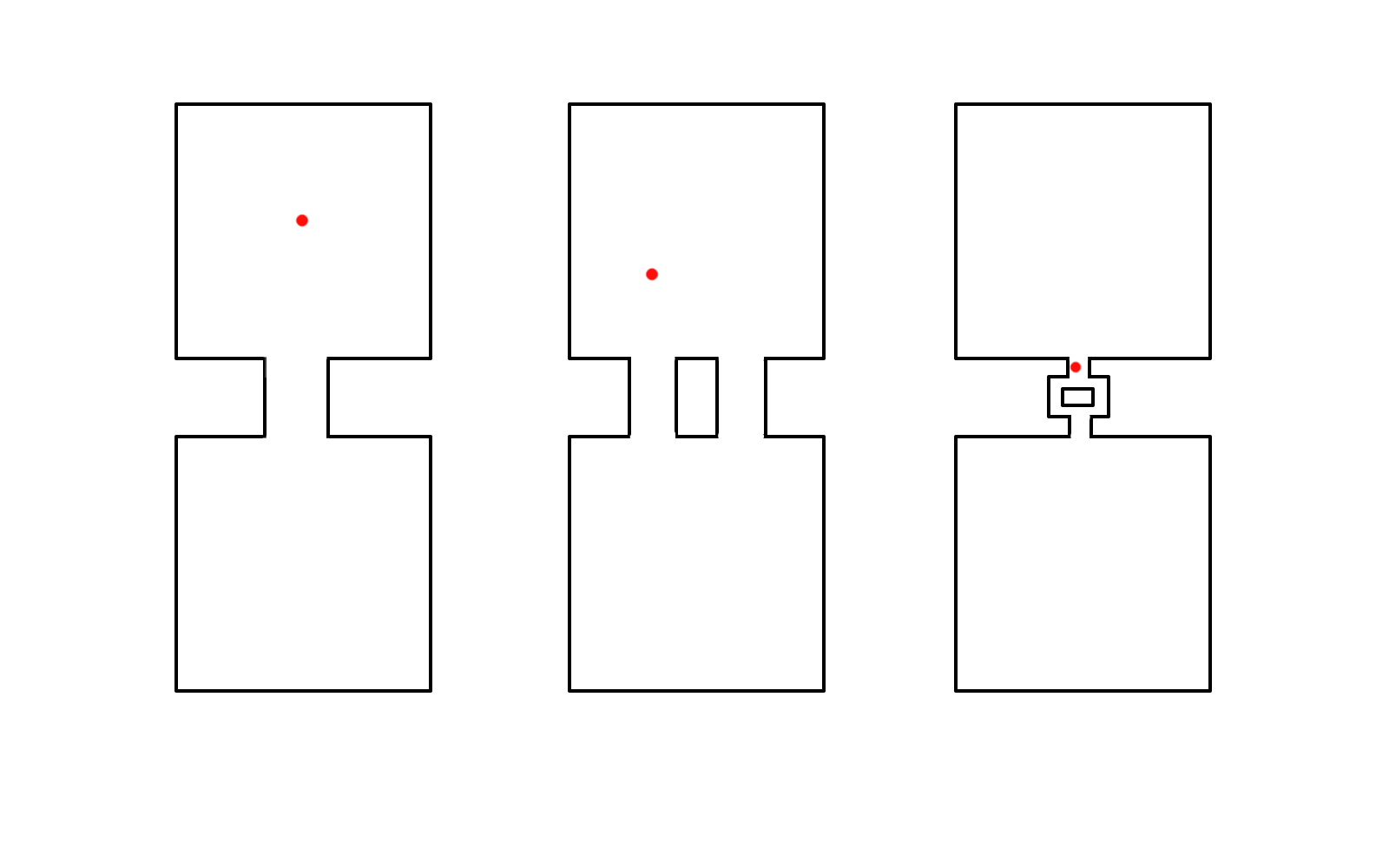
65 year old female with COPD and palpitations
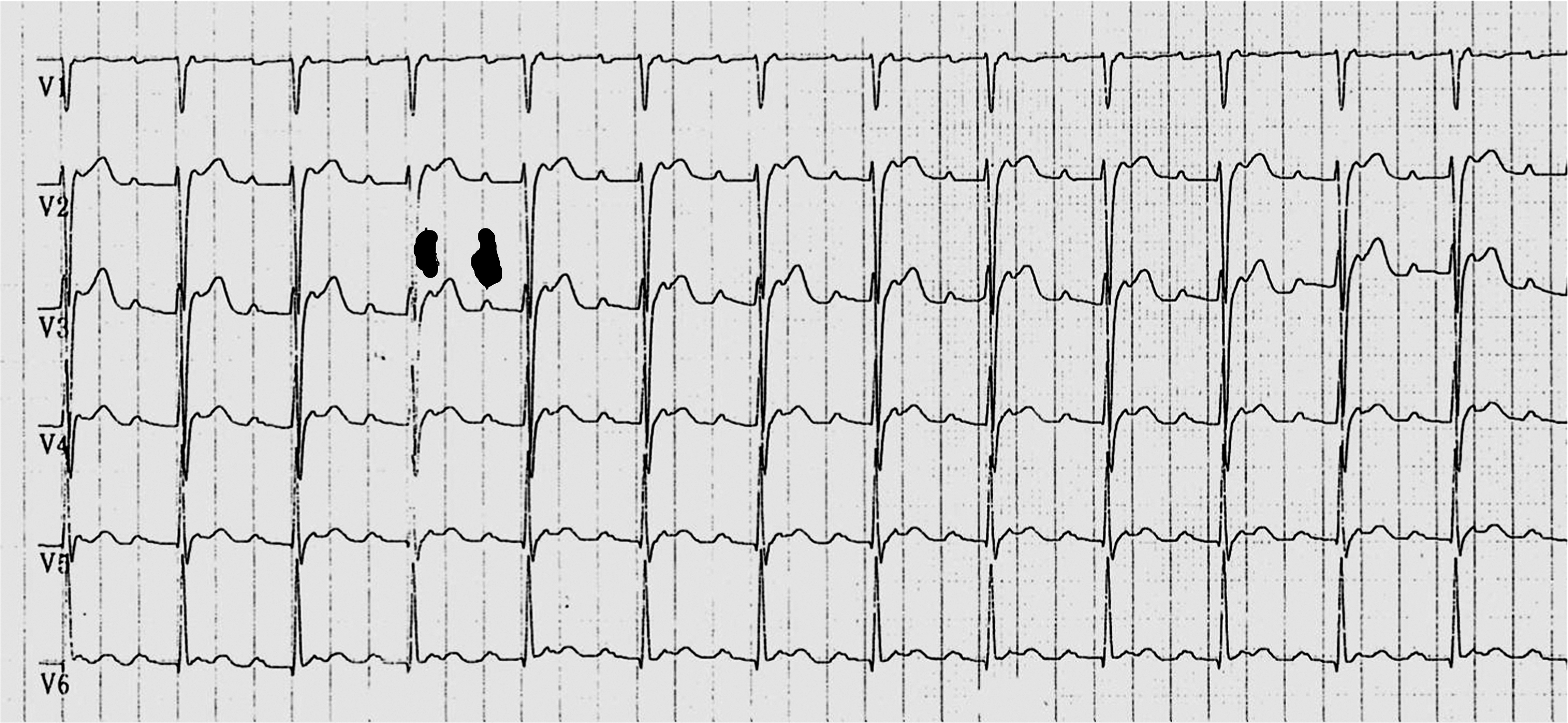
Vagal maneuvers in narrow QRS tachycardia
- Carotid sinus massage
- Straining / gag reflex
- Eyeball pressure
- Diving reflex
Adenosine
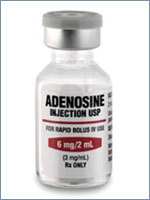
Atrial tachycardia
What will be the response to adenosine?
Middle aged hypertensive male with fatigue

12 lead ECG - same arrhythmia ? Something else?
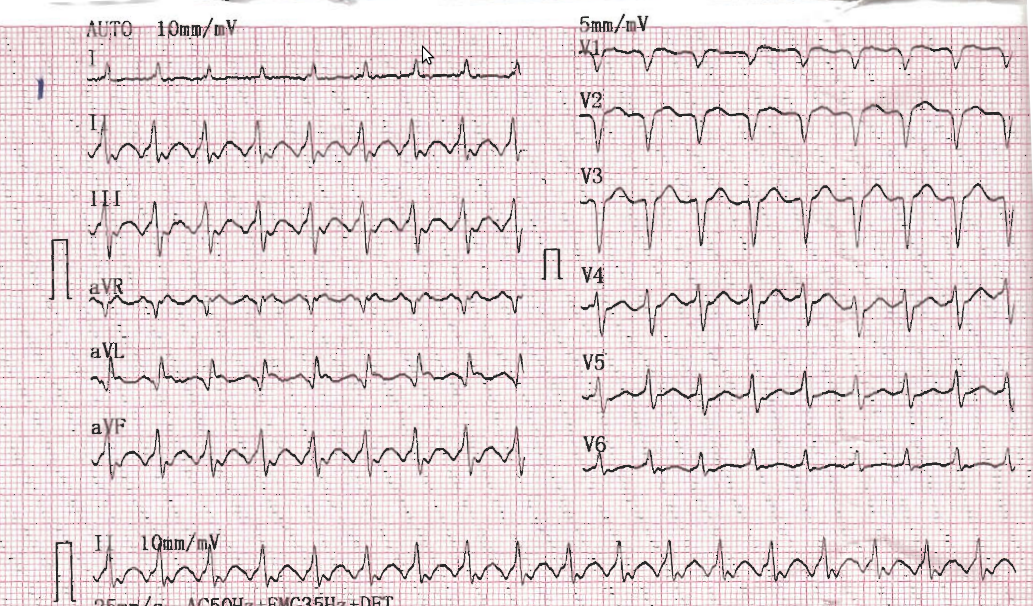
After adenosine bolus
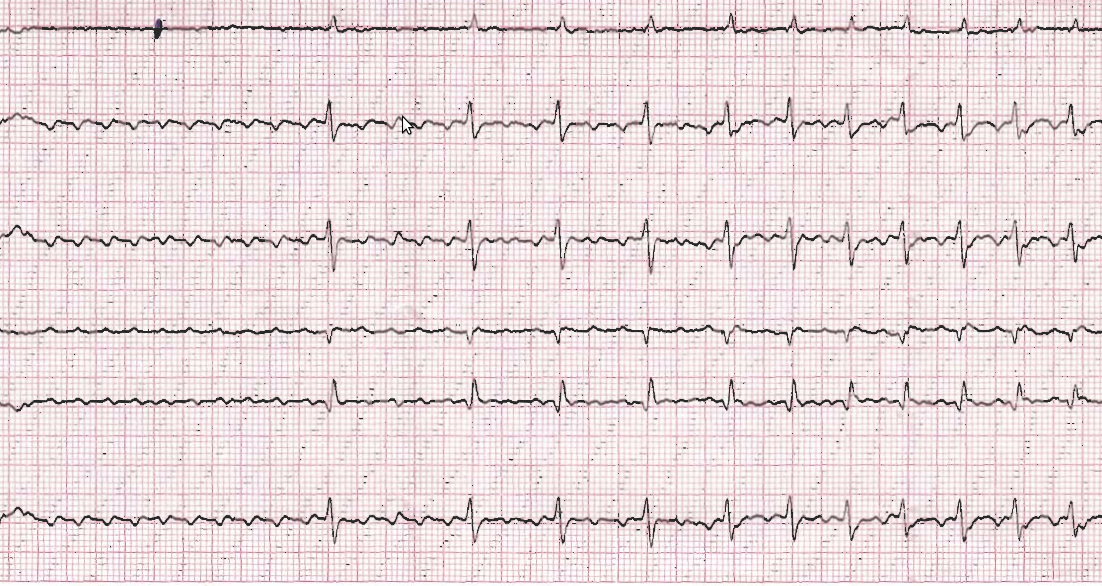
Atrial flutter
- Classic example of macroreentry
- Can be treated with AV blocking drugs
- Rhythm control by ablation
Macroreentry
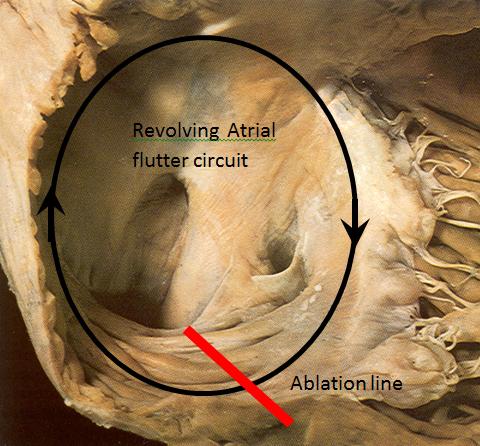
Middle aged female with palpitations
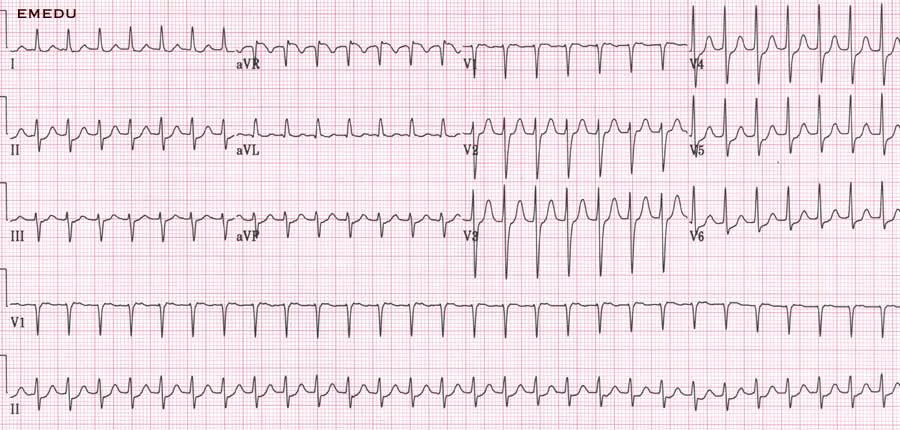
PSVT
- Paroxysmal supraventricular tachycardia
- Reentry using two pathways in AV node or AV node and AP
- Response to adenosine?
Reentry

AVNRT - Pseudo r`

Another patient - ECG after termination of tachycardia
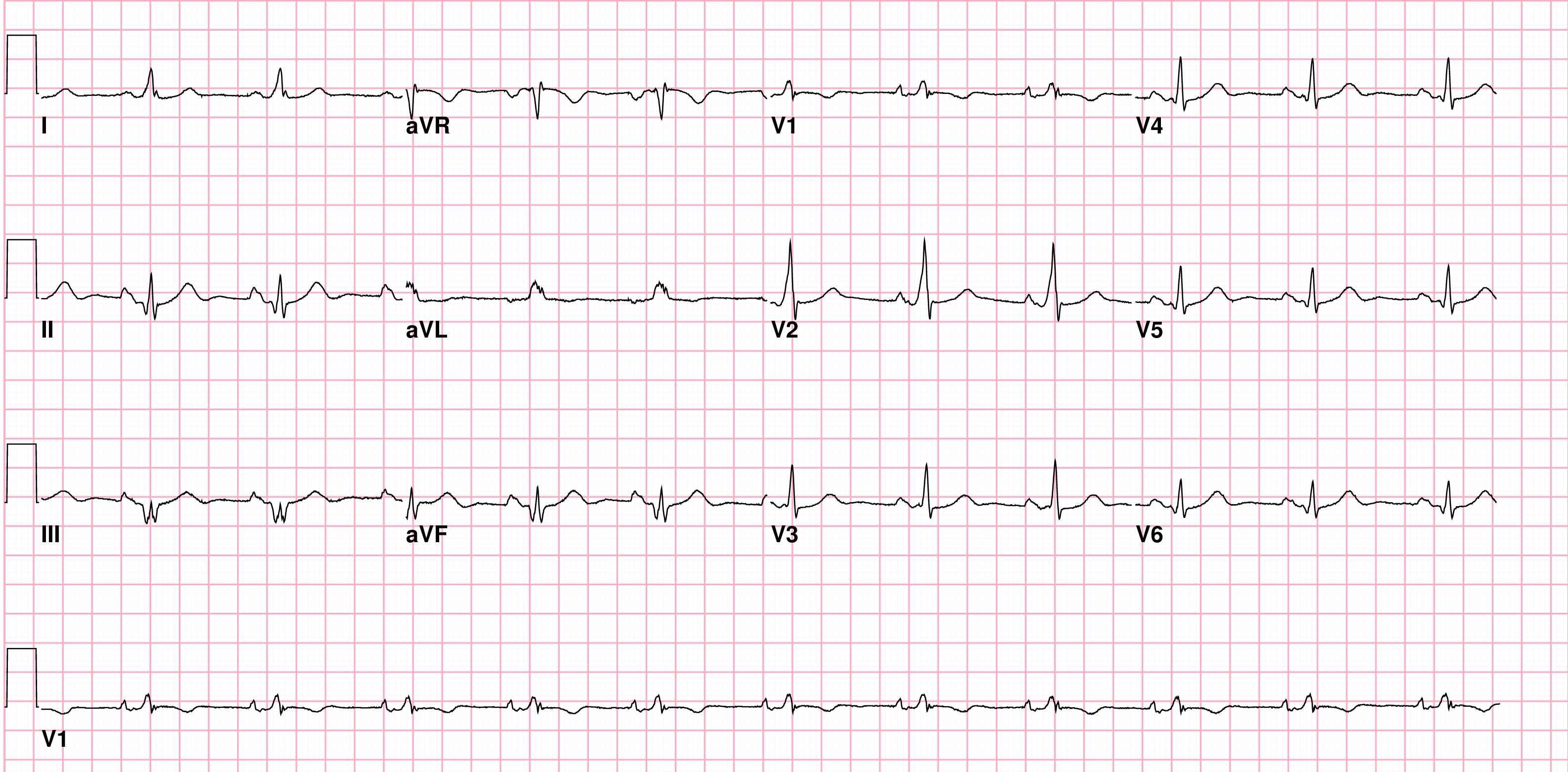
WPW syndrome
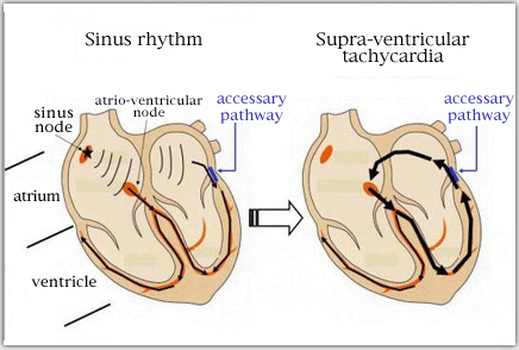
Radiofrequency ablation
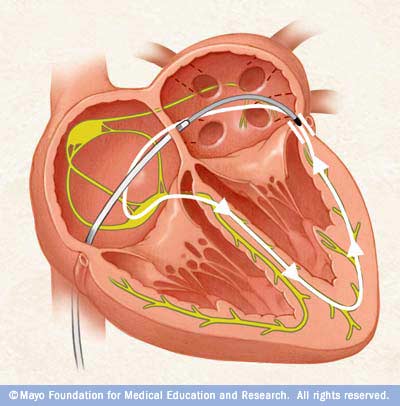
Elderly lady with dizziness

Atrial fibrillation
- Commonest arrhythmia
- With or without structural heart disease
- Loss of atrial pump function
- High ventricular rate
- Thromboembolism
- Rate versus rhythm control
Middle aged male with previous myocardial infarction

Palpitations and presyncope
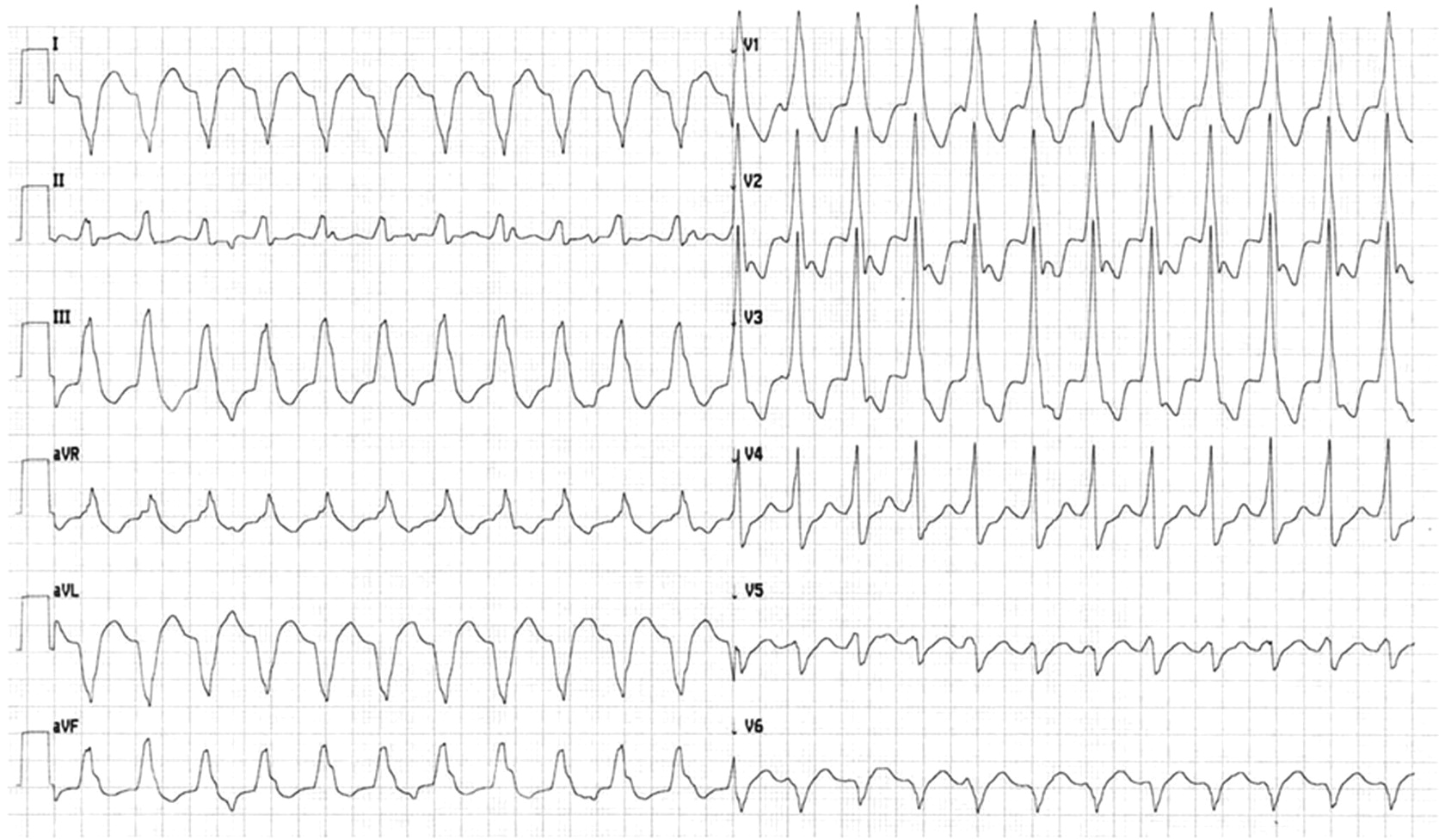
Ventricular arrhythmias
- Idiopathic
- Structural heart disease
- Risk of sudden death
- Drugs
- Lignocaine
- Amiodarone
Young female with recurrent syncope

Patient in CCCU
 Treatment ?
Treatment ?
Defibrillator
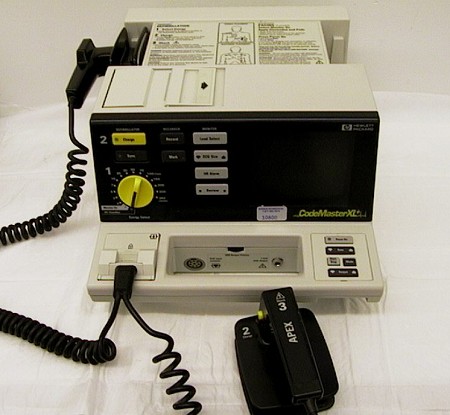
Implantable defibrillator
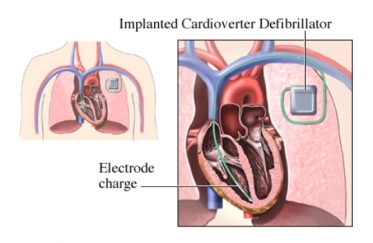
Summary
- Abnormalities of rhythm are an important class of heart disorders
- May present as slow rate or rapid rate
- Can be life threatening in some patients
- Wide variability in presentation, evaluation and management
- Repetitive exposure to ECGs, management of individual patients
Questions / Comments / Feedback
- https://rajaselvaraj.in/talks/arrhythmias_mbbs_2020_with_notes.html
- raja@rajaselvaraj.in